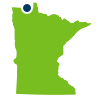
Site Highlight: Sprague Creek Peatland SNA
By Shelley Hedtke, Northwest Region SNA Specialist
|
Minnesota’s Wetland Conservation Act of 1991 established protection for 18 ecologically important peatland areas in Minnesota’s northernmost counties. While these peatland SNAs are in fairly good to excellent ecological condition, a number of them have had hydrologic and vegetative impacts from past ditching efforts.
History of Disturbance
In the early 1900s, homesteaders began to settle in the peatland areas of the state, encouraged by real estate agents and counties who promoted the idea that if water was removed from the landscape, the soils would become productive farmland.
A large effort to drain the peatlands began in 1905 in Beltrami County and quickly expanded to Koochiching, Lake of the Woods and other counties over the next 20 some years. Ditches were dug in an attempt to drain the land for farming and for road construction.
The peatlands contain saturated organic soils which hold a lot of water and ditches would never be able to remove water off the landscape fast enough to drain them. The peat soils did not make productive farmland so the attempt to drain the peatlands failed. By 1931 many privately owned properties became tax delinquent leaving some counties near bankruptcy as a result in the loss of tax base and the high cost of bonds to construct the ditches.
These ditches have contributed to several ecological problems in peatland eco-systems including:
- alteration of surface and groundwater flows and rates,
- altered water tables that impact peatland plant and animal communities,
- increased carbon dioxide and methane releases (greenhouse gases),
- increased invasive species,
- reduced water quality,
- loss of biodiversity,
- and the potential for increased wildfire.
 Beaver dam in Sprague Creek ditch. Photo by Torin McCormack.
An Old Idea Comes Back to Life Through Legacy Funding
A big dream for peatland managers is nearing reality to restore a large portion of the drained Roseau Lake (part of the Roseau Lake Wildlife Management Area) in Roseau County.
This large, shallow lake was drained in the early 1900s for agricultural production, but its wet soils made farming difficult. Over the intervening years, landowners sold their property to Ducks Unlimited and the MN DNR for conservation.
Overarching goals for the lake restoration include increasing water storage in the lake basin to reduce flood damages downstream and creating shallow lake habitats for wildlife. However, a number of wetlands surrounding the old lake basin will be impacted by construction during the lake restoration project so a nearby site with enough restorable wetland acres had to be found to mitigate for the loss of those wetlands as required though the State’s Wetland Conservation Act of 1991 and the U. S. Army Corps of Engineers Sect. 404 wetland regulations.
This is where the Sprague Creek Peatland SNA comes into the picture. The SNA is located about 3 miles northeast of the drained Roseau Lake. It is around 830 acres and while relatively small by peatland SNA standards it contains rare spring fens and forested wetlands. The 8.5 miles of ditches in the SNA have affected the water movement and speed within the spring fen channels, which in their natural state, carried water slowly through the wetlands south of the SNA. Currently water from the spring fen channels flows into ditches within the SNA. The ditches then quickly move water into the Roseau River which runs westerly through the drained Roseau Lake basin.
As part of the Roseau Lake restoration project, the wetlands in Sprague Creek Peatland SNA will be rehabilitated by plugging ditches to reduce the flow of water being drained by the ditches. This should help restore the natural peatland hydrology and function, improve the native plant community condition, and reconnect the severed spring fen channel flows within the SNA. If successful, the project will also provide the necessary wetland mitigation credits needed for the Roseau Lake restoration project.
The Wetland Rehabilitation Process
To understand the impact ditching has had on the hydrology and vegetation in and around the SNA, a number of studies were conducted to compare before and after effects of ditch closure.
Vegetation surveys were conducted to:
- map the native plant communities in locations potentially affected by the ditches,
- create a plant species list,
- complete an assessment of the condition of the vegetation relative to ditch locations,
- and attempt to locate rare species that could be impacted by the ditch filling project.
In addition, 12 piezometers (water monitoring stations) were installed in and near the ditches within the SNA. This information helped us to understand how the ditches impact groundwater levels and flow directions as well as how effective the ditches are in transporting water out of the SNA. Peat was tested at these stations to see if it had degraded and if peat loss was attributed to ditching. Testing will help us understand how the surrounding soils may react after the ditches are closed.
Transects across the ditches at strategic locations provided a profile of peat depth and assessment of peat loss. Vegetation was surveyed for condition at these locations. This information will be used when filling ditch sections within the SNA to help maintain desired water table levels.
Staff from the Roseau River Watershed District and Minnesota Department of Natural Resources were involved in the development of the ditch closure design and specifications, and the overall plan for construction. Many other planning activities took place during the process to finalize this part of the Roseau Lake restoration. Much of the planning has been completed and we are ready to begin the construction phase of the ditch closure in Sprague Creek. This will be done when the ground is frozen and if all goes as planned may happen this winter.
Northwest Region SNA Program staff are excited to see the completion of this project in Sprague Creek. If we are lucky future monitoring will tell the story of a successful recovery of this beautiful peatland SNA. Lessons learned will be shared with the peatland conservation community and used to inform future ditch fill projects. We are also glad that when done it will help move the larger Roseau Lake basin restoration project one step closer to a successful completion.
Back to top

Staff Highlight: Haley Whitehouse
Haley Whitehouse is a new (since November 2023) SNA Management Specialist for DNR’s Central Region. Haley gets to help coordinate natural resource management and development activities on private and public lands, and will also get to work with a variety of volunteers and partners to accomplish SNA goals.
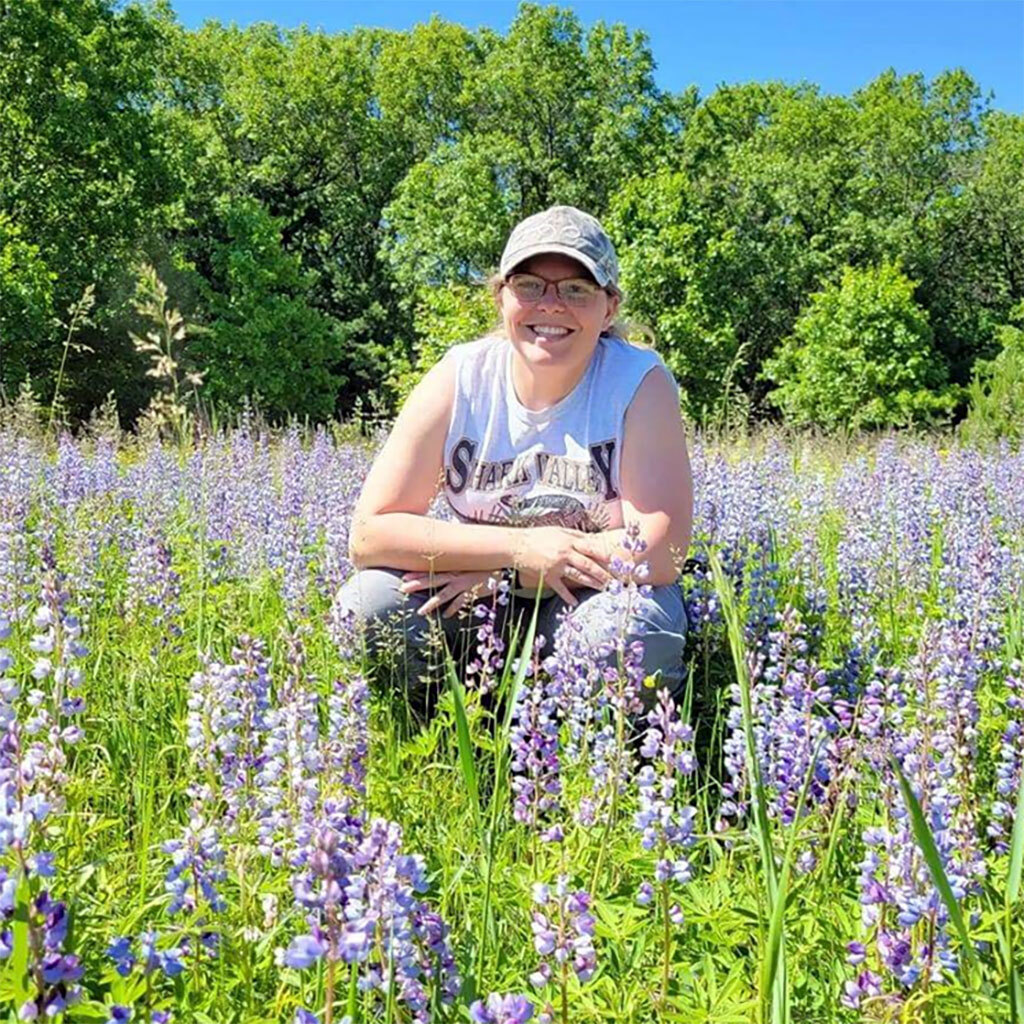 Haley Whitehouse surrounded by wild lupine. Photo courtesy of Haley Whitehouse.
Why do you do this work?
I had originally started out wanting to work with endangered and threated animals in some form and stumbled upon the SNA program. I realized this program would allow me to help manage land and conserve areas for a wide variety of species that are in need. I get the most joy out of knowing I get to make a direct impact on the land and feel like I am leaving this Earth a little better with each project I get to help tackle/complete.
What are the challenges of this line of work?
There are many challenges in this field. Physical, mental, and emotional. Physically, we do a lot of work with equipment and hand tools to accomplish our management objectives. This could mean hiking in long distances, operating equipment, and lifting heavy things. It is a challenge mentally because it sometimes feels like a losing battle with invasive species and can be a bit daunting to tackle a new project. It can also be a challenge to communicate effectively with co-workers and the public on the goals and activities that we have for an area. It can also be emotionally challenging because we all get invested in the areas we work in and it means a lot to all of us, especially me, when we get things accomplished that will make a big difference.
What is your favorite way to spend time outdoors (and why)?
I love getting to be behind the lens of my camera. I like looking at the land through a different view and getting to turn off the management side of my brain for a bit, which feels nice to do. I like to explore new places with my fiancé and that allows me to get to find new things to capture on my camera.
What do like to do outside of work?
I like to read, cook, bake, set puzzles, and cuddle with my kitty, George! I enjoy spending quality time with friends, family, and my fiancé. I also listen to a lot of podcasts and always looking for new ones, so if you see me around, feel free to share your favorite one with me!
Back to top
Make the DNR’s Rare Species Guide Even Better
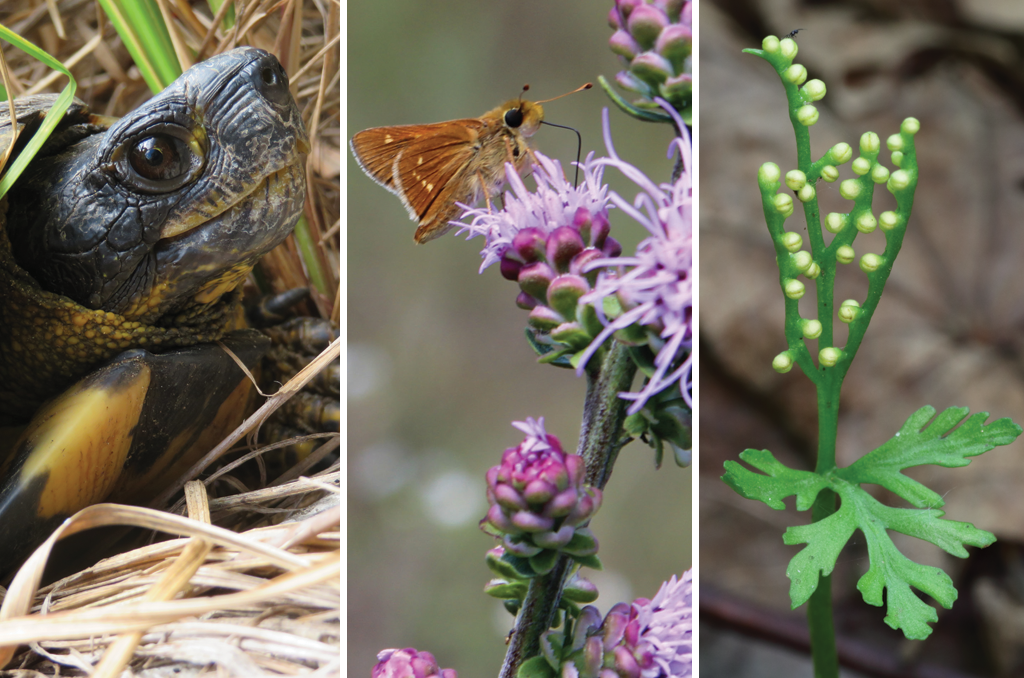
Please take this Minnesota DNR survey and help us improve the Rare Species Guide. The Guide is a dynamic, interactive resource for information on Minnesota's endangered, threatened, and special concern species. It includes profiles featuring the status, distribution, ecology, conservation, and management of our rarest animals and plants. The DNR wants to improve the guide…with your help! The survey will let us know how we can make the Guide even better!
Please take the survey now (less than 10 minutes). Thank you!
Back to top
Notes from Site Stewards
Site stewards monitor SNAs across Minnesota. Their observations provide valuable information to the SNA Program. Summer prairie visits were regularly reported, with a variety of observations and tasks completed.
- Last month Stephen Saupe became the newest SNA site steward. He wasted no time making observations at his site, Rice Lake Savanna SNA. On a November 17 visit to walk the perimeter and through the middle of the site he noted few invasive species and hand-pulled just a few buckthorn. He also noted “the site is rich in poison ivy”!
- Site steward Diane Newberry noted in a recent report that it has been fun to hike all around Mary Schmidt Crawford Woods SNA this fall and see much less first-year garlic mustard in the woods. ”Lots more hiking, lots less pulling!”
- Martha McPheeters, Kawishiwi Pines SNA site steward, and Bill Tefft, Purvis Lake-Ober Foundation SNA site steward, were of incredible help to SNA staff on October 25. They all trekked about 0.75 miles through the woods, across a bog, and on a trail into the Kawishiwi Pines SNA to install a new wood-routed sign. They then retraced their steps back out with the broken sign.
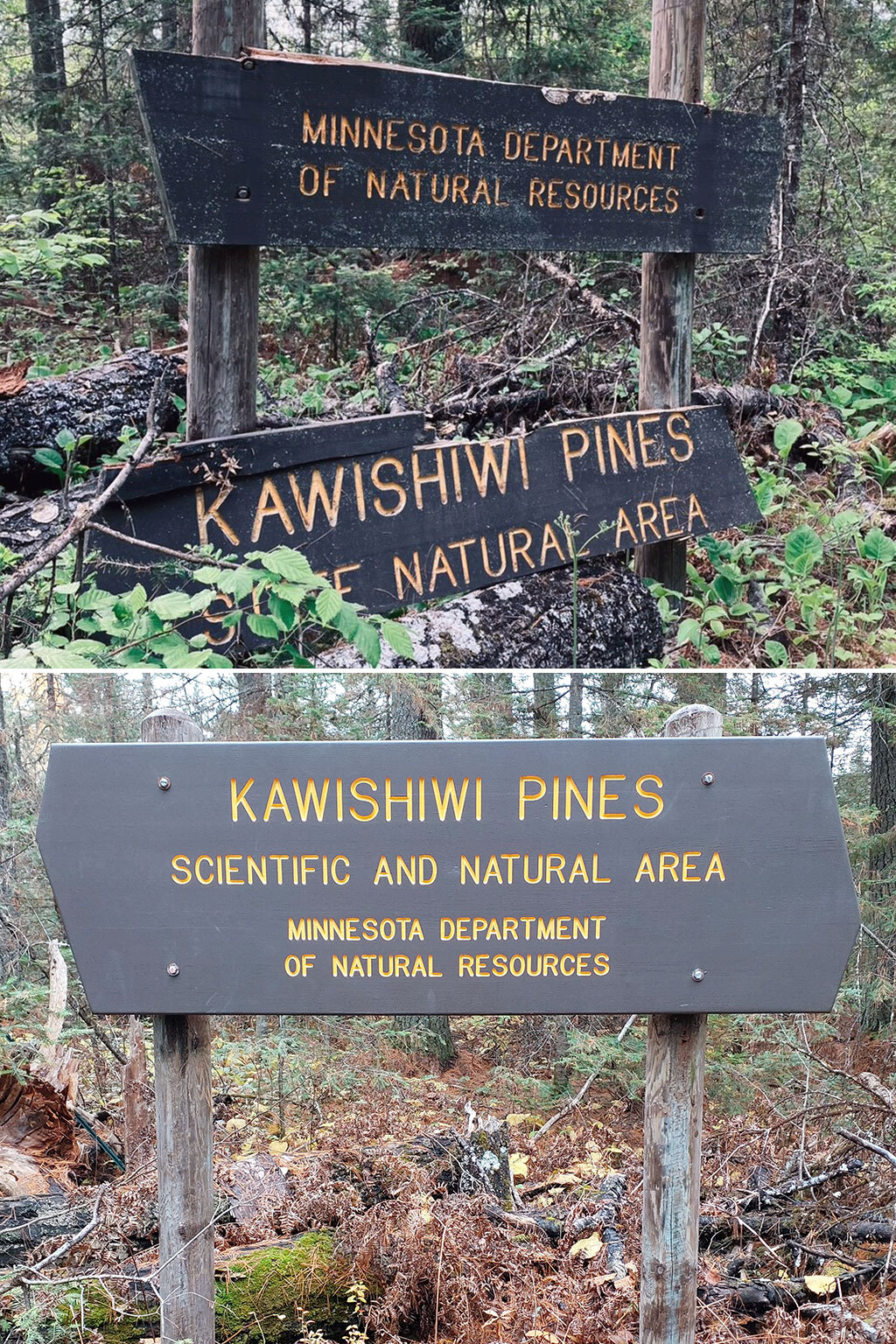 The wood routed sign at Kawishiwi Pines SNA before, and a much improved version after. Photo by Martha McPheeters (above), SNA staff (below).
Back to top
SNA Events
Winter snows will hopefully be on tap in time for a few fun winter events scheduled in the coming months. Get those snowshoes ready! Check out the detail for each event on the SNA calendar.
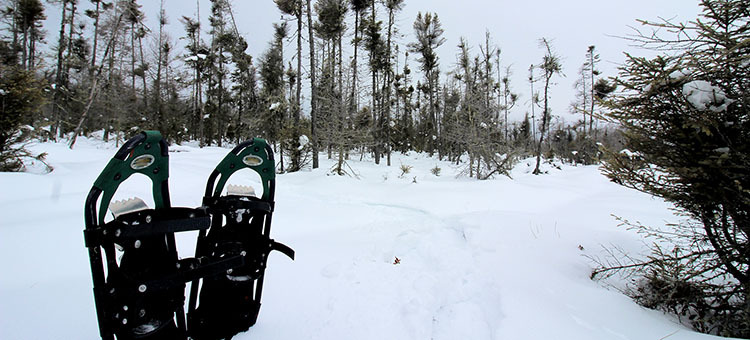
01/20/24 Sunset Snowshoe Chisholm Point Island SNA
02/09/24 Sunset Snowshoe Burntside Islands SNA
|